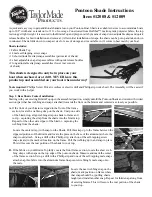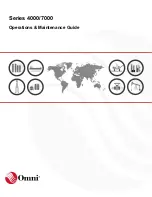
8. To examine the extreme periphery, instruct the patient to:
a) look up for examination of the superior retina
b) look down for examination of the inferior retina
c) look temporally for examination of the
temporal retina
d) look nasally for examination of the nasal retina.
This routine will reveal almost any abnormality
that occurs in the fundus.
9. To examine the left eye, repeat the procedure outlined
above except that you hold the ophthalmoscope in the
left hand, stand at the patient’s left side and use your left
eye.
CAUTION:
Before actuating the red-free filter/crossed linear polarizing
filter slide switch, pull the instrument away from the patient’s
face to prevent contact with finger or switch.
Examine the disc for clarity of outline, color, elevation and condition of
the vessels. (step 7)
Overcoming corneal reflection
One of the most troublesome barriers to a good
view of the retina is the light reflected back into the
examiner’s eye by the patient’s cornea — a condition know
as corneal reflection.
1. On the ophthalmoscope shown in this book, the crossed
linear polarizing filter may be used. This filter reduces the
corneal reflection by 99%. To engage, simply move the
switch on the front of the instrument to the position
underneath the white crosshairs. It is recommended that
the crossed linear polarizing filter be used when corneal
reflection is present.
2. Use the small spot aperture. However, this reduces the
area of the retina illuminated.
3. Direct the light beam toward the edge of the
pupil rather than directly through its center. This
technique can be perfected with practice.
7
• Ophth Broch ForeignWorking.2 4/26/99 1:02 PM Page 7










































